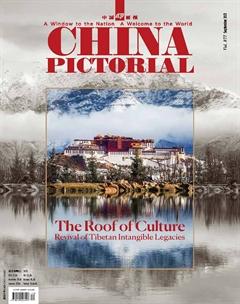The Highest Botanical Garden in China
The Qinghai-Tibet Plateau is a fascinating and attractive land. Some visit here for the magnificent snowy mountains and stunning lakes, others for the unique ethnic culture, but for the nature enthusiasts, the greatest draw of the plateau is its rich and diversified botanic resources.
Hailed as the “roof of the world” and the “third pole,” the plateau covers about 2.5 million square kilometers in area, most at an altitude over 4,000 meters above sea level. The region represents the top rung of Chinas three-step-ladder topography.
The mountainous areas of the plateau, where the weather can get extremely cold, are harsh for almost all forms of animal life. But the mountains are still home to a wide variety of alpine plants, with some areas boasting the largest concentration of alpine plants in China and even the world.
In the process of geological and climatic changes on the plateau over tens of millions of years, plants in the locale have also constantly adapted to the new environment with unimaginable “wisdom.”
Between the snowline of the alpine mountains and lush meadows and bushes is a transition zone with special terrain: The scree slopes may seem barren and lifeless, but between the cracks of the broken rocks, unique plateau plants flourish. Bizarre and gorgeous flowers hiding far from human activity shape Chinas highest botanical garden.
Various alpine plants present tenacious and amazing vitality just by surviving and reproducing in the harsh and cold plateau environment with strong ultraviolet rays. They include Meconopsis horridula, known as “the flower closest to the sky,” the two-meter-tall Rheum nobile, dubbed“Kangba Man” by the local people, Saussurea medusa with a fluffy “coat,” and Saussurea obvallata, which serves as a special “greenhouse” for bees.
With about 2,600 stunning plant pictures, the book Wild Flowers on the Qinghai-Tibet Plateau introduces 1,376 representative plants and their variants from the Qinghai-Tibet Plateau and adjacent areas including the Hengduan Mountains in northwestern Yunnan Province and some plateau areas in western Sichuan Province. The book covers various geographical terrains from high-altitude scree slopes to low-altitude river valleys.
Many plants on the QinghaiTibet Plateau tend to be either difficult to miss on the journey or once-in-a-lifetime experiences to see in person.
Various flowers bloom freely in the wild, like stars fallen from the sky down to the grassland below and arranged into pictures embroidered by lovely Tibetan girls.
An illustrated book for plant identification and classification, this work selected pictures that not only fully display the traits of the plants, but also their beauty and relationship with the plateau environment.
“Species identification and classification are accurate and accompanied by rich information to paint a general picture of the flora kingdom on the QinghaiTibet Plateau,” wrote Sun Hang, a botanist and research fellow at the Kunming Institute of Botany, Chinese Academy of Sciences, in his remarks for the book. “The introduction of each species is accompanied by several pictures to reflect different observational angles and natural variations of the plant, which is extremely helpful. Many of the pictures had never been published before.”

